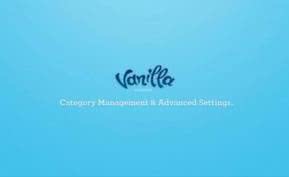Community Forum
How Get Satisfaction Transforms Customer Engagement

Get Satisfaction powers customer engagement through online communities, connecting prospects with customers to create an open dialogue and drive sales. This new generation of social forums allows companies to market directly to their audience and have that audience market be brand advocates in return. We spoke with Get Satisfaction’s VP Marketing Azita Martin on the opportunities and challenges of the second generation of social.

WEBSITE: getsatisfaction.com
CUSTOMERS: 3,000 paid customers, 70,000 communities, 35 million users
LOCATION: San Francisco, CA
What is Get Satisfaction’s mission?
Our goal is to connect customers to each other and to offer ways to get resolution for issues that customers may have. So besides connecting customers to each other and to the brands they love, we enable them to ask questions about the products and services they care about. They can ask a question if they’re looking to buy a product, or if they’re having support issues, or if they want to provide product feedback, etc. This enables companies to build a much more authentic relationship with their customers at every stage of the customer life cycle.
Social is hot right now, and there are a lot of companies competing in this space. What inspired you to jump into the mix as well?
The founders did not initially start the company to sell Software-as-a-Service; they started it because they felt that there was a need on the consumer side to connect to each other to get answers about things they cared about. Social media and social networks in particular were connecting people to their families and friends, but not to products and services. So that’s what Get Satisfaction evolved into: a place to create branded communities where vendors could engage with their consumers.
What does your target customer look like?
Our focus has always been small to medium-sized businesses, but we also have some very large customers, like Proctor & Gamble, who has six different brand communities with us, or Kellogg’s. Today, 70,000 branded communities are using our solutions. Some of these belong to one company who happens to have four or five different communities. Of those 70,000 communities, our business model was initially to allow people to try it for free, and then upsell them with additional capabilities. To that effect, we have a small business solution set, and we also have communities with all the bells and whistles for enterprises.
We have over 3,000 paid customers, a total of 70,000 communities, and an average of 35 million users a month that are actively participating in these communities.
You guys are obviously very successful. What do you feel you do differently to stand out in this market?
One differentiator is our focus, which has always been to ensure that the consumer gets answers to their questions as quickly as possible – either from another customer or from an employee of the company that is an active community moderator. We believe in solving customer issues, or responding to them when they say, “Why don’t you put this in your product?” It creates real-life engagement, and it provides instant feedback. When consumers are evaluating your product and you can connect them with people that are already using your product, you can have your brand advocates sell the product for you. By connecting customers to each other and enabling them to get an answer from wherever they are, you’re dramatically accelerating the ability to drive more revenue through a community.
How is your company set up? Where are your offices located, your teams, and where is your customer base?
Our customers are mostly in North America – I’d say probably 95% of them is here. But we do have a few customers internationally. We are headquartered in San Francisco, and we have several offices in places where we have been able to find great engineering talent: Austin and Cambridge. We open up offices wherever the talent is.
Where do you feel you segment is headed? Where do you see it in about five years?
Without trying to be a cliché, we absolutely believe that an open customer community is the maturation or the second generation of social. Companies are realizing that consumers are all over the social network talking about brands and products, so there’s much more transparency. Companies have to listen and respond to these things.
When you look at the business model of Twitter and Facebook and LinkedIn and how they’re making money, a lot of it is about advertising. Many companies have taken what they know about digital advertising, and have applied it to social media. So when you hear about a company spending millions of dollars on social networks, what they’re doing is advertising. In reality, however, those advertisement don’t pay off very effectively. The first generation of social has served for companies to participate in the social network, build their fans and their followers, broadcast, advertise, and so forth. The second generation is about building authentic engagement with the customer around the issues that they want to address, and being able to make social conversations have a longer shelf life than the typical Twitter or Facebook post, and leveraging this as rich marketing content.
Our customer community is highly indexed by search engines, so a lot of our customers organically show up very high in search results, not because of their website, but because of their community and the conversations that are happening there.
Let’s talk about the challenges people are having in terms of getting your brand out there and connecting with their customers. There is a lot of noise to sift through.
I think the reality of it is that every day, there’s one more thing coming up, whether it’s Pinterest, Tumblr, etc. Each company needs to figure out which of those channels are most valuable to them. A lot of women are on Pinterest, for example. So if you’re selling to women, that would be something to consider. If you’re selling to HR people, you probably want to be on LinkedIn. The key is to be more selective about which of those social channels meets your needs. But how can you tie back those social channels back to your revenue? It’s important for brands and companies to be able to track not just the number of followers or the number of retweets, but also how this is tied to revenue, so they can make investments aligned with what’s really bringing them the ultimate revenue.
What do you feel is the most exciting thing about Get Satisfaction for you personally?
The company is truly known for its leadership in terms of understanding social and being open and honest about how to use social to drive business value.
Earlier you mentioned your competition in this space. Who would that be?
Primarily companies that have a branded community, like Jive. But our model and technology are very different. Jive is much more complex. It is very much built for large enterprises and requires a lot of professional services as well as several months to deploy. Our solution is built for consumers. It has a very intuitive user interface, and it is very easy and light to set up and get going.
Besides Get Satisfaction, who do you feel are the most interesting people or companies right now in technology, and why?
A lot of the analytics companies who are trying to provide insight into fans and followers and customers to better understand what motivates them and how companies can leverage them to drive revenue. We partner with GoodData, for example, to help our customers analyze their community. Their analytics enable you to very quickly identify prospects in the community based on the type of questions they’re asking.
Want to read more Business-Software.com exclusive interviews with CEOs and company founders? Head over to the Behind the Software Q&A section of the blog to browse the complete collection.









